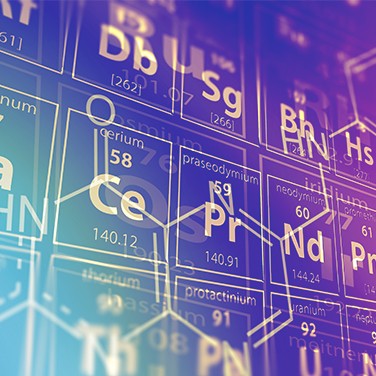2019: International Year of the Periodic Table
By Kylie Wolfe
In February of 1869, Dmitrii Mendeleev organized 63 known elements according to their atomic weight. Originally titled “Draft of system of elements: based on their atomic masses and chemical characteristics,” what is now known as the periodic table became a chemistry essential for millions of students, teachers and scientists. For the 150th anniversary year, we’ll be sharing its history and featuring specific elements from different families or groups, showing the lasting relevance of this table.
A Brief History
Years before Mendeleev’s famed table, scientists were trying to organize the elements solely by their atomic weights or properties. In contrast, Mendeleev combined his knowledge of the two, arranging the elements based on the patterns that resulted. At the time, chemists weren’t familiar with protons, neutrons, electrons and other subatomic particles. Really, this idea was somewhat controversial. What Mendeleev wasn’t aware of was that he had actually arranged the elements in order of increasing atomic number, the number of protons in each atom.
Leaving gaps for elements that had yet to be discovered, Mendeleev managed to predict the existence and properties of at least five elements. His work revealed trends in chemical properties and electron configurations, making it easier for students and scientists alike to learn this information. Like anything in science, the periodic table has evolved, but the basic principles of the table have remained unchanged.
December: Mendelevium
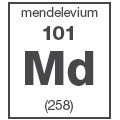
Mendelevium was discovered in 1955 at the University of California, Berkeley, by Glenn T. Seaborg and his colleagues. It does not occur naturally and was instead synthesized using a particle accelerator to bombard einsteinium-253 with helium ions. Seaborg’s original experiments led to mendelevium-256, but the most stable form of the element has an atomic weight of 258. Mendelevium is used only for research purposes and is considered a member of the actinide series. Seaborg discovered a number of other elements and even has one named after himself, but this one in particular was named for the creator of the periodic table, Dmitri Mendeleev.
November: Copper
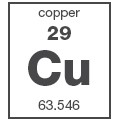
Thanks to its many properties, copper is an ideal candidate for electronics and power generation and transmission. It’s one of the most ductile metals and is also a good conductor of heat and electricity. Copper has a long history and has been used in many noteworthy ways. It was once the main element in coins and is still used in popular alloys like bronze. The Statue of Liberty’s iron and steel structure is also coated in a thin layer of copper. Over time, it has naturally oxidized to form a protective coating known as a patina, giving the statue its iconic green color.
October: Mercury
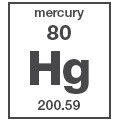
Mercury is known for its unique properties and toxicity. It’s the only metal that exists as a liquid at room temperature and, because of its ability to expand rapidly and uniformly in response to temperature changes, it has been widely used in thermometers. The element was previously integral to a variety of medical and industrial applications, but is used less and less in these areas due to its toxicity. If inhaled, ingested, or absorbed, it can damage the brain and kidneys, causing cognitive problems and other negative symptoms. The EPA actually launched an effort to reduce the use of this element in thermometers whenever possible.
September: Aluminum
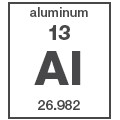
Known as the most abundant metallic element in the Earth’s crust, aluminum has many beneficial properties. It’s corrosion resistant, lightweight, and both ductile and malleable, making it easy to stretch or flatten. Aluminum is also non-magnetic, yet a great conductor of heat and electricity. This element is often used in aircraft construction, building materials, and other equipment. It’s also found in common household items like cans, kitchen utensils, and foil. Aluminum compounds play an important role in manufacturing applications as well. In pure form, the metal is silvery white in color, but it’s usually found combined in nature.
August: Carbon
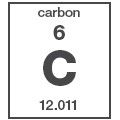
Considered the sixth most abundant element, carbon is known to form more compounds than all other elements combined. And because of its electron arrangement, it can form four single bonds with other atoms or a combination of single, double, and triple bonds. Carbon exists in many forms; the most common are graphite and diamond. Graphite is a soft solid that can conduct electricity and heat, while diamond is incredibly hard and offers no electrical conductance. Both have a crystalline structure, but their atoms are arranged differently. This contributes to a unique set of physical characteristics. One isotope, carbon-14, is radioactive and important for carbon dating and labeling.
July: Phosphorous
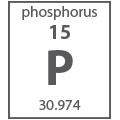
Phosphorous sits just below nitrogen on the periodic table and is represented with the symbol P. At room temperature, it’s a colorless, semitransparent solid and is highly reactive, burning spontaneously when exposed to air. The word phosphorous means light-bearer in Greek, an appropriate meaning for an element that was often used in fireworks for its bright sparks and flashes. It’s now used in fertilizers to help plants grow, providing a source of phosphorous in the human diet. One form, calcium phosphate, is the primary component of teeth and bones. Adenosine triphosphate, or ATP, is found in cells and is essential for storing energy.
June: Oxygen
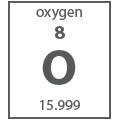
Essential to life on Earth, oxygen makes up 21% of our atmosphere by volume and is the third most abundant element in the universe. It forms a protective layer known as ozone (O3) to shield the Earth from the sun’s ultraviolet radiation. At room temperature, it’s considered a colorless and odorless gas, but when it reaches -297°F, it becomes a pale blue liquid. Oxygen is very reactive and can combine with most other elements — including hydrogen, to form water (H2O), and carbon, to form carbon dioxide (CO2). It’s also soluble in water, making it possible for aerobic organisms to live beneath the surface.
May: Iodine
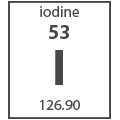
Classified as one of five halogens and the least reactive of the group, iodine is a solid at room temperature. In this form, it’s dark blue and black in color and can bypass the liquid state, forming a purple vapor. Iodine is essential to human health because it’s needed for the production of thyroid hormones that help control metabolism and development. To ensure people consume enough iodine, it’s often added to salt. Beyond that, iodine is used in antiseptics, animal feed, and photographic film. It’s found both in ocean water and the Earth’s crust but is ultimately fairly rare.
April: Gold
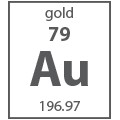
Number 79 on the periodic table is a classic symbol of wealth and status dating back to 4000 B.C., when it became a regular element of jewelry. Not only is its shiny golden color attractive, it’s the only metal where this appearance occurs without a reaction. Gold is a great conductor of heat and electricity, doesn’t tarnish, and is both ductile and malleable. Though it’s solid at room temperature, pure gold is rather soft and is therefore mixed with other metals for jewelry and coins and measured in karats. It’s considered a transition metal and is mostly mined in South Africa.
March: Calcium
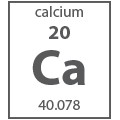
A soft, silvery-white metal, calcium tarnishes in the presence of air and reacts with water. It’s considered the most abundant of the alkaline earth metals and the fifth most abundant in the Earth’s crust. Also found in bones and teeth in the form of calcium phosphate, this mineral contributes to strong and healthy growth. Calcium ions help cells communicate and transmit different messages, playing another important role in the human body. This element is also found in the form of calcium carbonate, or limestone; calcium sulfate, or gypsum; and calcium fluoride, or fluorite among others.
February: Potassium
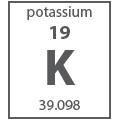
As one of the Alkali Metals, potassium sits along the left side of the periodic table. It’s soft and silvery and oxidizes quickly when exposed to air. Elemental potassium is considered very reactive and, as a result, isn’t found by itself in nature. Usually, it’s stored under mineral oil to prevent an interaction with water, a combination that reacts violently and produces a purple flame. More common forms are potassium chloride, used in fertilizers; potassium carbonate, used in glass; and potassium hydroxide, used in liquid soap. Like hydrogen, potassium is important for sustaining life — it helps maintain the body’s balance of electrolytes.
January: Hydrogen
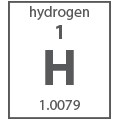
This element is essential to human life. It’s easily the most abundant, being found in the sun’s core, in the stars and combining with oxygen to form water. It is characterized as odorless, colorless and tasteless, making it undetectable with basic human senses. Unlike other elements, hydrogen does not belong to a particular family and is unique in its simplicity, only having one proton and one electron. It is found bonded to either itself or something else to fill its electron shell. To some, hydrogen is the future for pollution-free fuel, emitting only water vapor and warm air when used to power vehicles. Though naturally a gas, it can become a liquid if cooled to -423°F.
Check back next month for another featured element.
